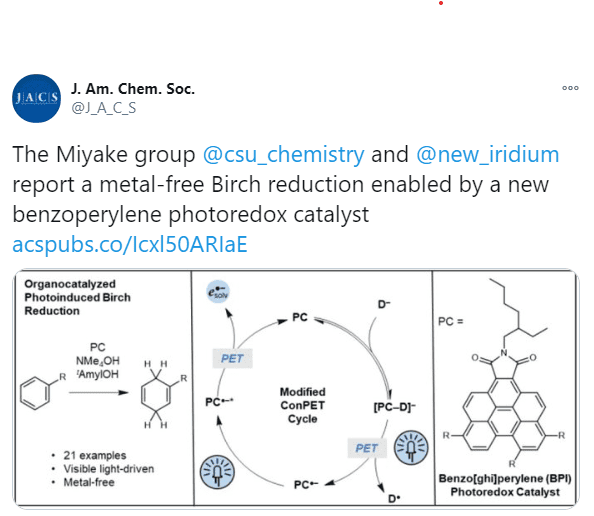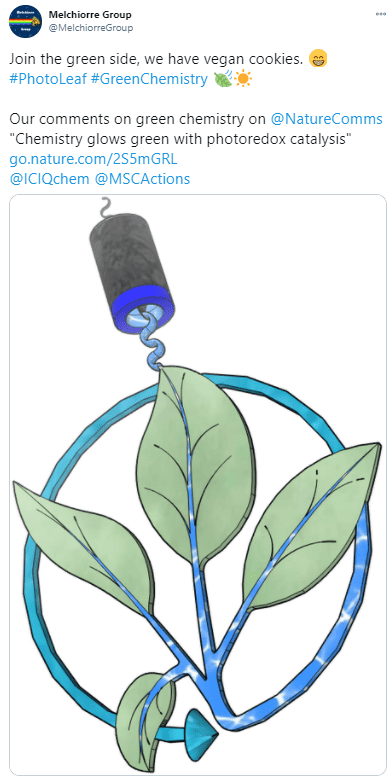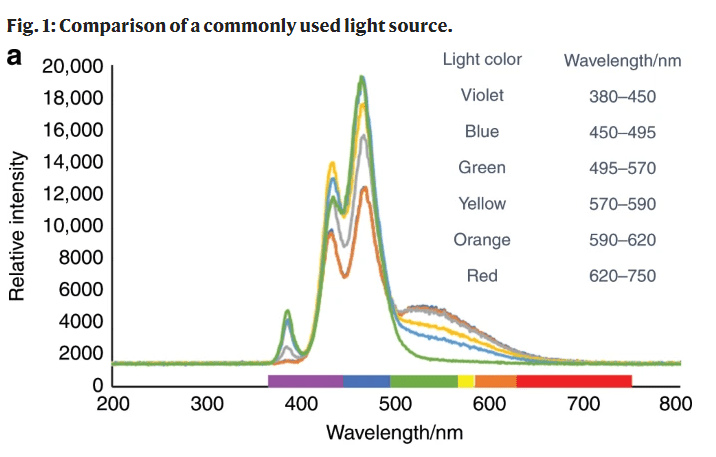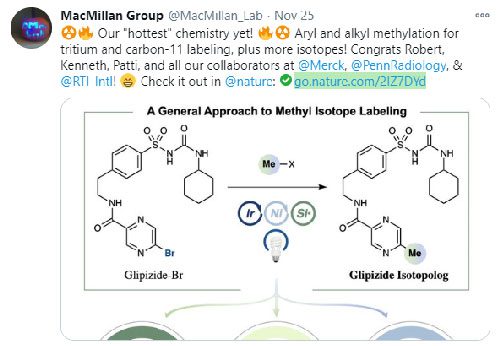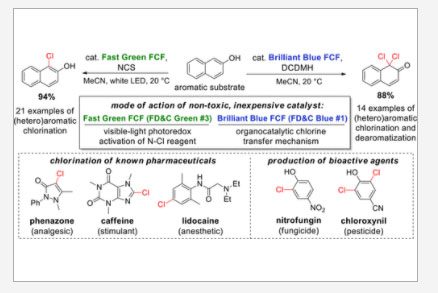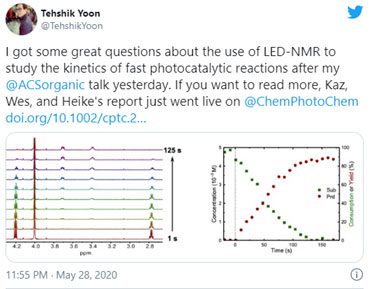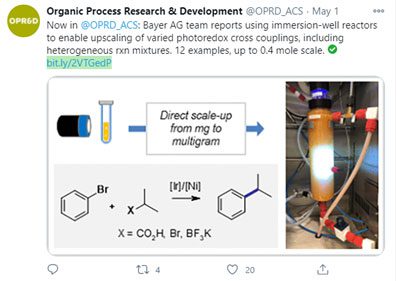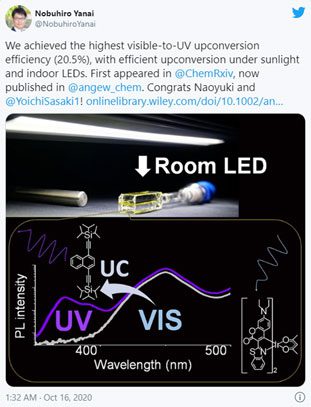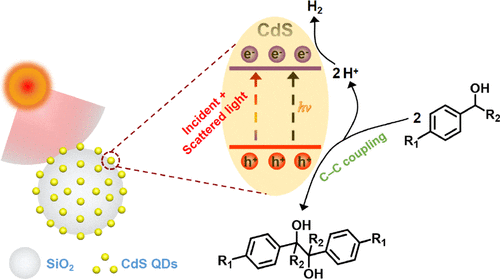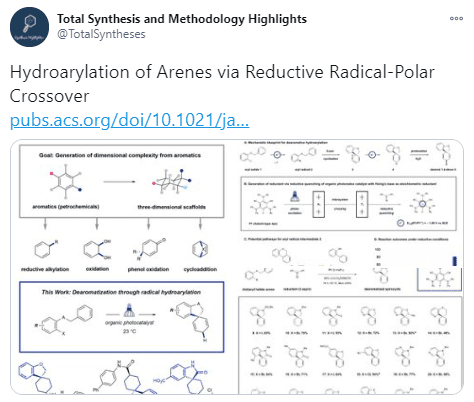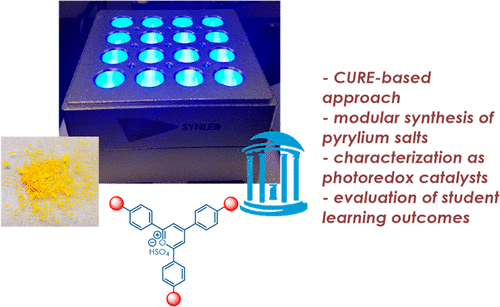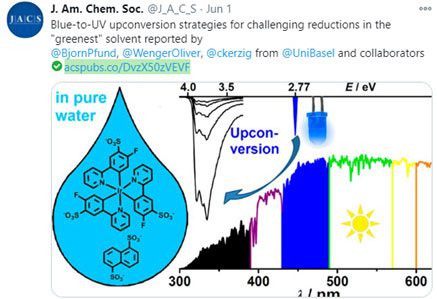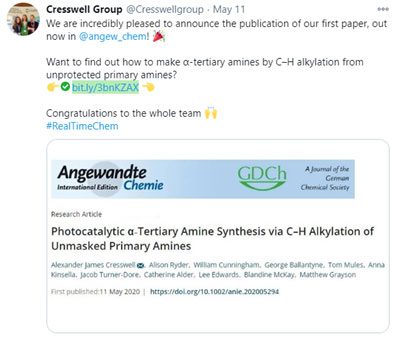Year in review 2020. Let’s all agree to not look back. 20 papers for 2020

Unofficially the Official Logo of 2020…
As the year comes to the close, we thought it was time to have a little fun and look back at the year in photochemistry. 2020 was a big year for us at HepatoChem under some trying circumstances. Before we move forward to 2021 with the launch of some exciting new equipment and products, we thought that we would look back at some of our favorite photochemistry work in the literature from the past year. A quick search finds a few thousand (photoredox, photocatalysis, photochemistry, metallaphotoredox) papers so far in 2020 and with(out lifting a finger to verify) very little research effort we’re willing to bet that this is more than in 2019. Many of the papers on the list break ground and move the field farther into unimaginable areas, while others find photochemical replacements for traditional reactions solving some unmet need. A few papers are outside the realm of topics that most of us spend any time thinking about but demonstrate the power of photochemistry. Some of the papers also include nice pictures of EvoluChem photoreactors and equipment and deserve a shout out. And a few others are just plain weird. And let’s face it, 2020 was weird for all of us.
If you think we’ve missed your favorite paper or just want to send along an example of your work that you want us to recognize or recognize in the future, send us an email or respond to the tweet for this article (#photoredox20for2020) If you disagree with the list, let us know how we screwed up by sending us an email here.
To get started, a few FAQ about how we generated this list.
What are the criteria for inclusion?
Each paper probably uses light in some way, either a bulb, LED, laser or sunlight. We started this exercise without any particular standards or criteria, other than the goal to share the papers we enjoyed (the most) and to make it fun. It then became readily apparent that there were far more than 20 papers worthy to be included, because there was a ridiculous amount of good work put out this year. So, at a certain point we just stopped adding more. Some of the work will likely be familiar to anyone used to the photochemical field; however, in our fake scoring system bonus points were given for open access papers and work from new professors.
Why 20 papers?
The year is 2020, I can’t believe you asked this question.
Are there 20 papers listed?
No, there are probably more or maybe less. You’ll need to read and count the entire list to find out.
Is there a vote for best photochemistry achievement of 2020?
No. Awards are stupid. Do you really think we want to deal with running an internet voting poll and awarding photoredox achievement of the year to this? https://www.youtube.com/watch?v=vfLZOkn0chc
Do the links for each article work?
Sometimes, when formatting an email or a links on website, links go to the wrong place. You can either be confused by this, email us and complain. Or use google and find the correct article. Your choice. Other times, links go to wrong place intentionally and you might find something fun.
Do I win a prize if I click on each article?
You’ll have to click on each article to find out.
How do I get my work on the 21 for 2021 list?
Go here and get to work. Send us the paper once you’ve submitted.
In no particular order, here are our 20 favorite photochemistry papers for 2020.
1: Organocatalyzed Birch Reduction Driven by Visible Light
Our Take: We wrote about this one back here. Just an incredible achievement to find this much reduction potential in a photocatalytic reaction with mild conditions. Unless you prefer running reactions with liquid ammonia.
Authors: Justin P. Cole, Dian-Feng Chen, Max Kudisch, Ryan M. Pearson, Chern-Hooi Lim, and Garret M. Miyake
Ref: J. Am. Chem. Soc.2020, 142, 31, 13573–13581
Link: https://pubs.acs.org/doi/abs/10.1021/jacs.0c05899
2: Development of a Platform for Near-Infrared Photoredox Catalysis
Our Take: Another paper we wrote about before. Check this one out to discover all the reasons your favorite photochemical reaction might be better run with a red LED.
Authors: Benjamin D. Ravetz, Nicholas E. S. Tay, Candice L. Joe, Melda Sezen-Edmonds, Michael A. Schmidt, Yichen Tan, Jacob M. Janey, Martin D. Eastgate, and Tomislav Rovis
Ref: ACS Cent. Sci.2020, 6, 11, 2053–2059
Link: https://pubs.acs.org/doi/abs/10.1021/acscentsci.0c00948
Tweet:
3: Chemistry glows green with photoredox catalysis
Our Take: A quick note on the efficiency and sustainability of photoredox catalysis
Authors: Giacomo E.M. Crisenza, Paolo Melchiorre
Ref: Nature Communications, 2020, 11, Article 803
Link: https://www.nature.com/articles/s41467-019-13887-8
4: Photons as a 21st century reagent
Our Take: Please read this paper. Everyone should treat light as a reagent like you would treat any other reagent in a chemical reaction. To repeat again, everyone should treat light as a reagent like you would treat any other reagent in your reaction.
Authors: Holly E. Bonfield, Thomas Knauber, François Lévesque, Eric G. Moschetta, Flavien Susanne & Lee J. Edwards
Ref: Nature Communications, 2020, 11, Article number 804
Link: https://www.nature.com/articles/s41467-019-13988-4
5: Three-Component Three-Bond Forming Cascade via Palladium Photoredox Catalysis (open access)
Our Take: Look at that cool photochemical flow cell setup. I wonder who makes that?
Authors: Peter Bellotti, Maximilian Koy, Christian Gutheil, Steffen Heuvel and Frank Glorius
Ref: Chemical Science, 2020, ASAP
Link: https://pubs.rsc.org/en/content/articlelanding/2021/sc/d0sc05551d#!divAbstract
Tweet:
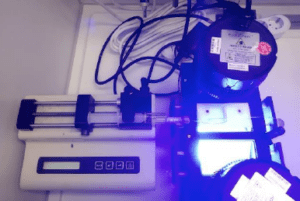
6: Metallaphotoredox aryl and alkyl radiomethylation for PET ligand discovery
Our Take: Amazing work from a collaboration between the Macmillan lab at Princeton with Merck, UPenn and RTI International for last state fast radiolabeling of pharmaceutically relevant compounds.
Authors: Robert W. Pipal, Kenneth T. Stout, Patricia Z. Musacchio, Sumei Ren, Thomas J. A. Graham, Stefan Verhoog, Liza Gantert, Talakad G. Lohith, Alexander Schmitz, Hsiaoju S. Lee, David Hesk, Eric D. Hostetler, Ian W. Davies & David W. C. MacMillan
Ref: Nature, 2020, 6797.
Link: https://www.nature.com/articles/s41586-020-3015-0
Tweet:
7: Synthesis of azetidines via visible-light-mediated intermolecular [2+2] photocycloadditions
Our Take: Very interesting work making highly strained four-membered ring building blocks photochemically.
Author: Marc R. Becker, Emily R. Wearing & Corinna S. Schindler
Ref: Nature Chemistry, 12, 898-905 (2020)
Link: https://www.nature.com/articles/s41557-020-0541-1
Tweet:
8: U.S. Food and Drug Administration-Certified Food Dyes as Organocatalysts in the Visible Light-Promoted Chlorination of Aromatics and Heteroaromatics
Our Take: While it was the weirdness of the title that caught our eye here, being able to use non-toxic catalysts that are produced cheaply in metric ton quantities to do important chemistry is certainly valuable. There is only so much iridium out there for everyone else to use.
Authors: David A. Rogers, Megan D. Hopkins, Nitya Rajagopal, Dhruv Varshney, Haley A. Howard, Gabriel LeBlanc*, and Angus A. Lamar*
Ref: ACS Omega, 2020, 5, 13, 7693-7704
Link: https://pubs.acs.org/doi/10.1021/acsomega.0c00631
9: LED”NMR Monitoring of an Enantioselective Catalytic [2+2] Photocycloaddition
Our Take: Oh, how far we’ve come. So, we’re using LED’s inside of NMRs now to study enantioselective photochemical reaction mechanisms for rapid reactions that are complete in under 5 minutes? WTF. It’s a shame that everyone says all this photochemistry stuff won’t scale up or else this field might really catch on….
Authors: Kazimer L. Skubi, Wesley B. Swords, Heike Hofstetter, and Tehshik P. Yoon
Ref: ChemPhotoChem 2020, (4), 685-690.
Link: https://chemistry-europe.onlinelibrary.wiley.com/doi/abs/10.1002/cptc.202000094
Tweet:
10: Upscaling Photoredox Cross-Coupling Reactions in Batch Using Immersion-Well Reactors
Our Take: Ok, fine. You’ve made a few tens of grams of your product with LED’s. Are you sure you can really scale up this thing for something useful?
Authors: Isabelle Grimm, Simone T. Hauer, Tim Schulte, Gina Wycich, Karl D. Collins, Kai Lovis, and Lisa Candish
Ref: Org. Process Res. Dev. 2020, 24, 6, 1185-1193.
Link: https://dx.doi.org/10.1021/acs.oprd.0c00070
Tweet:
11: Development and Execution of a Production-Scale Continuous [2 + 2] Photocycloaddition
Our Take: 5 kg/day. We good now? Have we settled this yet? If not convinced, you can find many more scale up success stories.
Authors: Matthew G. Beaver, En-xuan Zhang, Zhi-qing Liu, Song-yuan Zheng, Bin Wang, Jiang-ping Lu, Jian Tao, Miguel Gonzalez, Siân Jones, and Jason S. Tedrow
Ref: Org. Process Res. Dev.2020, 24, 10, 2139–2146
Link: https://pubs.acs.org/doi/10.1021/acs.oprd.0c00185
12: C(sp3)–H functionalizations of light hydrocarbons using decatungstate photocatalysis in flow
Our Take: Very cool work using a cheap photocatalyst for activation of light alkanes including methane.
Authors: Gabriele Laudadio, Yuchao Deng, Klaas van der Wal, Davide Ravelli, Manuel Nuño, Maurizio Fagnoni, Duncan Guthrie, Yuhan Sun, Timothy Noël
Ref: Science, 2020, (369), 92-96.
Link: https://science.sciencemag.org/content/369/6499/92/tab-pdf
Tweet:
13: Organocatalytic Approach to Photochemical Lignin Fragmentation
Our Take: Metal-free reductive cleavage of lignin using an organic photocatalyst.
Authors Cheng Yang, Markus D. Kärkäs, Gabriel Magallanes, Kimberly Chan, and Corey R. J. Stephenson
Ref: Org. Lett. 2020, 22, 20, 8082–8085
Link: https://pubs.acs.org/doi/10.1021/acs.orglett.0c03029
14: Discovery of Key TIPS”Naphthalene for Efficient Visible”to”UV Photon Upconversion under Sunlight and Room Light
Our Take: Harvesting low energy sunlight and turning it into localized higher energy UV light. I’m sure we can find a few applications for this technology. Just a guess.
Authors: Naoyuki Harada, Yoichi Sasak, Masanori Hosoyamada, Nobuo Kimizuka and Nobuhiro Yanai
Ref: Angewandte Int. Ed., 2020, ASAP.
Link: https://onlinelibrary.wiley.com/doi/10.1002/anie.202012419
Tweet:
15: Potent Reductants via Electron-Primed Photoredox Catalysis: Unlocking Aryl Chlorides for Radical Coupling
Our Take: Electrochemistry and Photochemistry, together? That’s two things in this paper for old-school chemists to complain about.
Authors: Nicholas G. W. Cowper, Colleen P. Chernowsky, Oliver P. Williams, and Zachary K. Wickens
Ref: J. Am. Chem. Soc.2020, 142, 5, 2093–2099
Link: https://pubs.acs.org/doi/10.1021/jacs.9b12328
Tweet:
16: Efficient Photoredox-Mediated C–C Coupling Organic Synthesis and Hydrogen Production over Engineered Semiconductor Quantum Dots
Our Take: The title could use more buzzwords, but the technology is very cool.
Authors: Ming-Yu Qi, Yue-Hua Li, Masakazu Anpo, Zi-Rong Tang, and Yi-Jun Xu
Ref: ACS Catal.2020, 10, 23, 14327–14335
Link: https://pubs.acs.org/doi/10.1021/acscatal.0c04237
17: Hydroarylation of Arenes via Reductive Radical-Polar Crossover
Our Take: Very useful reaction for dearomatization without H2, metals or low temperatures.
Authors: Autumn R. Flynn, Kelly A. McDaniel, Meredith E. Hughes, David B. Vogt, and Nathan T. Jui
Ref: J. Am. Chem. Soc.2020, 142, 20, 9163–9168
Link: https://pubs.acs.org/doi/10.1021/jacs.0c03926
Tweet:
18: Development of a Large-Enrollment Course-Based Research Experience in an Undergraduate Organic Chemistry Laboratory: Structure–Function Relationships in Pyrylium Photoredox Catalysts
Comment: Adding photochemistry to the undergraduate curriculum is incredibly important, specifically experiments for undergraduate lab.
Authors: Cole L. Cruz, Natalie Holmberg-Douglas, Nicholas P. R. Onuska, Joshua B. McManus, Ian A. MacKenzie, Bryant L. Hutson, Nita A. Eskew, and David A. Nicewicz
Ref: J. Chem. Educ. 2020, 97, 6, 1572–1578
Link: https://pubs.acs.org/doi/10.1021/acs.jchemed.9b00786
19: High-throughput Synthesis and Screening of Iridium(III) Photocatalysts for the Fast and Chemoselective Dehalogenation of Aryl Bromides
Our Take: A rapid assay for screening over 1,000 unique iridium catalysts from the lab that first synthesized several of the most commonly used Iridium catalysts used today over a decade ago.
Authors: Velabo Mdluli, Stephen Diluzio, Jacqueline Lewis, Jakub F. Kowalewski, Timothy U. Connell, David Yaron, Tomasz Kowalewski, and Stefan Bernhard
Ref: ACS Catal. 2020, 10, 13, 6977–6987
Link: https://pubs.acs.org/doi/10.1021/acscatal.0c02247
20: UV Light Generation and Challenging Photoreactions Enabled by Upconversion in Water
Our Take: Blue to UV-upconversion in water. Water-soluble iridium catalysts. Degradation of some pretty nasty contaminants. Much more to come from this technology.
Author: Björn Pfund, Debora M. Steffen, Mirjam R. Schreier, Maria-Sophie Bertrams, Chen Ye, Karl Börjesson, Oliver S. Wenger, and Christoph Kerzig
Ref: J. Am. Chem. Soc.2020, 142, 23, 10468–10476
Link: https://pubs.acs.org/doi/10.1021/jacs.0c02835
Tweet:
So many great papers like we said earlier, so we thought we’d be like 2020 and have this article seemingly never end…
21: Rapid High-Resolution Visible Light 3D Printing
Our Take: Some of us use 3D printers to make photoreactors to run photocatalysis. Some people using photoredox to 3D print. The circle of life.
Authors: Dowon Ahn, Lynn M. Stevens, Kevin Zhou, and Zachariah A. Page
Ref: ACS Cent. Sci.2020, 6, 9, 1555–1563
Link: https://pubs.acs.org/doi/10.1021/acscentsci.0c00929
22: Photocatalytic α-Tertiary Amine Synthesis via C–H Alkylation of Unmasked Primary Amines
Our Take: First paper from the Cresswell group early this year. Congrats. Check out their photo page (https://cresswell-lab.wixsite.com/cresswellgroup/photos). Also, we retroactively assign Photochemistry Achievement of the Year for 2019 to this… incredible, edible lab diorama.
Authors: Alexander James Cresswell, Alison Ryder, William Cunningham, George Ballantyne, Tom Mules, Anna Kinsella, Jacob Turner-Dore, Catherine Alder, Lee Edwards, Blandine McKay, and Matthew Grayson
Ref: Angew. Chem. Int. Ed., 2020, 59, 14986-14991.
Link: https://doi.org/10.1002/anie.202005294
Tweet:
And to close, a few reviews for the year…
Visible-Light Photocatalysis as an Enabling Technology for Drug Discovery: A Paradigm Shift for Chemical Reactivity
Our Take: Nice review with a summary of photocatalysis platforms within drug discovery programs.
Authors: Peijun LiPeijun Li, Jack A. Terrett, and Jason R. Zbieg
Ref: ACS Med. Chem. Lett.2020, 11, 11, 2120–2130
Link: https://pubs.acs.org/doi/10.1021/acsmedchemlett.0c00436
Tweet:
Stereoinduction in Metallaphotoredox Catalysis
Our Take: Summary of the state of art in chiral photoredox reactions.
Authors: Alexander Lipp, Shorouk O. Badir, and Gary A. Molander
Ref: Angewandte Chemie Int. Ed. 2020, ASAP
Link: https://onlinelibrary.wiley.com/doi/abs/10.1002/anie.202007668
Light-Triggered Click Chemistry
Comment: A good summary of the current state of the art in light activated click chemistry
Authors: Gangam Srikanth Kumar and Qing Lin
Ref: Chem. Rev. 2020, ASAP
Link: https://dx.doi.org/10.1021/acs.chemrev.0c00799
Light-Promoted Organic Transformations Utilizing Carbon-Based Gas Molecules as Feedstocks
Our Take: Summary of the state of the art in photochemical reactions using feedstocks.
Authors: Bin Cai, Han Wen Cheo, Tao Liu, and Jie Wu
Ref: Angewandte Chemie Int. Ed., 2020, ASAP
Link: https://onlinelibrary.wiley.com/doi/abs/10.1002/anie.202010710
New Redox Strategies in Organic Synthesis by Means of Electrochemistry and Photochemistry
Our Take: A good review combining the topics of electrochemistry and photochemistry.
Authors: Jinjian Liu, Lingxiang Lu, Devin Wood, and Song Lin
Ref: ACS Cent. Sci.2020, 6, 8, 1317–1340
Link: https://pubs.acs.org/doi/10.1021/acscentsci.0c00549
If you made it this far, thanks for reading and hope you enjoyed!
Hope everyone out there has a great end of 2020 and we look forward to hearing from you in 2021.

